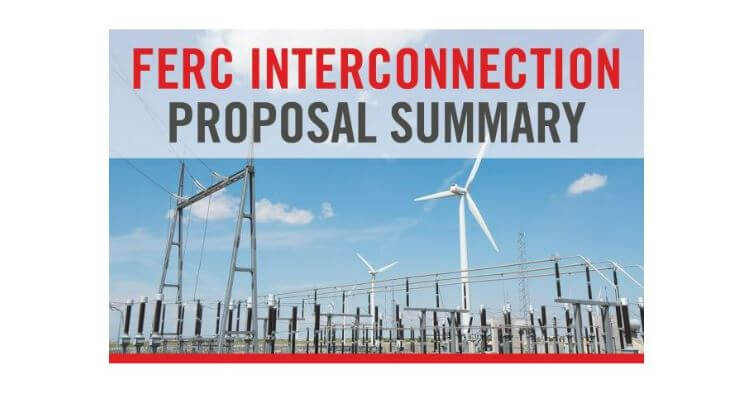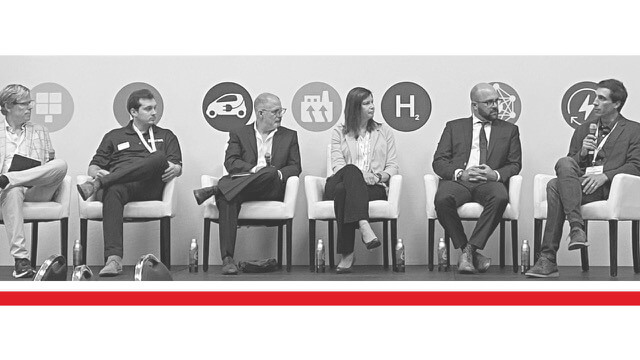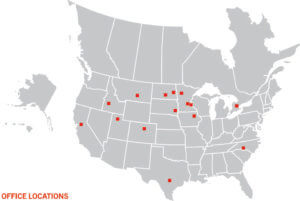FERC Interconnection Proposal Summary: Docket No. RM22-14-000

November 11, 2022
Updated 4/26/2023
Interconnection reform is a common and critical point of discussion among developers, utilities, independent power producers (IPPs) and the Federal Energy Regulatory Commission (FERC). Efforts to generate more renewable energy and create the proper infrastructure to do so have resulted in significant increases in interconnection requests and wait times. Projected wait times for interconnection have increased from 2.1 years to 3.7 years.
As wait times and requests in the INTERCONNECTION QUEUES INCREASE, developers and IPPs are looking to submit competitive applications and requests to secure their spot in the queue. Meanwhile, development project lifecycles continue to face uncertainty among supply chain constraints and other environmental and economic barriers, which has created some inefficiencies for utilities when projects in the queues aren’t ready to move forward. With these double-sided challenges in mind, FERC has issued a NOTICE OF PROPOSED RULEMAKING (NOPR) to change how new generation projects in queues are prioritized and integrated.
Proposed Interconnection Reforms
FERC’s proposed changes are designed to optimize and streamline interconnection requests to minimize the existing backlog and to limit future delays in efforts to shift to more renewable energy generation.
The FERC NOPR will focus on three key areas:
- Implementing a first-ready, first-served cluster study process
- Increasing the speed of interconnection waitlist processing
- Incorporating technological advancements into the interconnection process
In order to achieve these goals, FERC is examining areas of reform for the existing interconnection procedure. These reforms include:
- Shifting to a “first-ready, first-served” process. Requests would be processed based on when customers meet certain development milestones.
- Increased financial commitment and readiness requirements.
- Site control. Developers would need to demonstrate 100% site control upon submission of an interconnection request.
- Co-location of multiple resources behind a single point of interconnection.
- Updated modeling and performance requirements for non-synchronous generating facilities. Interconnection customers would be allowed to incorporate technological advancements into the interconnection process, such as alternative transmission and grid-enhancing technologies, and the addition of storage resources to other types of generating facilities.
- More stringent study deadlines.
With these new interconnection reforms submitted, opinions from key stakeholders range in support and approval.
How FERC Interconnection Reform May Affect You
Interconnection demands are increasing across the country primarily driven by legislative changes, investor-driven initiatives and consumer demand. Developers, IPPs, utilities and contractors are looking to build renewable energy infrastructure on a large scale. Utilities and transmission providers are looking for ways to accommodate interconnected sources of clean energy as well as build their own facilities. This now includes (as a result of the Inflation Reduction Act) Municipals and Cooperatives who have the option of direct payment incentives mirroring tax incentives they have not been able to take advantage of in the past.
For the developers and IPPs submitting interconnection requests, receiving reliable and timely interconnection studies is essential. With a current shortage of qualified engineers throughout the industry, planning ahead for these studies and working with experienced consulting partners is essential.
Utilities and system operators throughout the renewable sector are working hard to keep up with increasing renewable generation requests. However, the increased demand is coinciding with labor and supply shortages. FERC’s interconnection reform efforts can streamline abilities to receive a request, perform the necessary studies and move renewable projects along.
Renewable generation companies will potentially benefit from faster turnarounds and slower wait times in a queue that seems to be ever-increasing if more stringent study deadlines and cost and timeline initiatives from the proposed interconnection rules are implemented.
Ulteig: A National Firm for Generation Interconnection Efforts
The proposed FERC interconnection improvements will mean cleaner energy can be developed and available to consumers sooner. Through focused planning and studies efforts, Ulteig is prepared to work with developers and generation providers across the country should the proposed changes take shape.
Our PLANNING AND STUDIES capabilities are comprehensive and are designed to align with the proposed legislation and initiatives from FERC and governing entities on the local, State and Federal levels. We are following new developments in the renewable and interconnection sphere constantly. Our engineers use state-of-the-art technology and processes to inform your efforts to successfully bring new generation projects online in a timely and cost-effective manner.
As FERC and other regulatory bodies refine and develop rules and legislation, we’ll keep up and ensure your development efforts stay aligned. CONTACT THE ENGINEERS AT ULTEIG for consultative services in everything related to generation studies, planning, project management, design and construction.
WHAT MAKES ULTEIG DIFFERENT?
From global energy producers to locally funded cities and private developers to government agencies, the clients we serve encompass a broad range of relationships and projects. Find out why Ulteig is a leader in the engineering industry.
Contact Us


